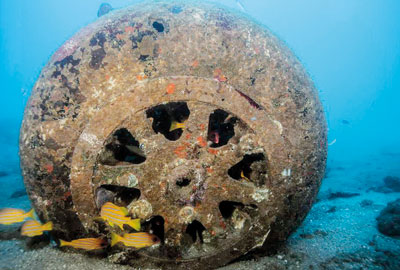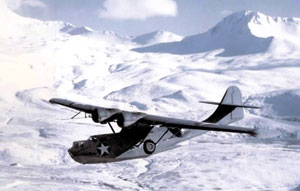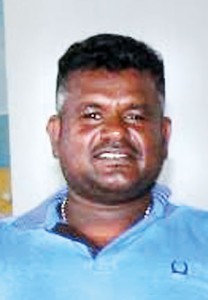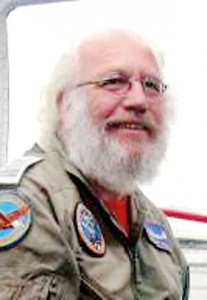Netting the lost Catalina

Catalina wheel (Pix by Dharshana Jayawardena)
When Wasantha Kumara’s fishing net got entangled in a ‘strange’ piece of metal in the waters of Kalkudah, just south of Passikudah, little did the fisherman know that this was going to be the beginning of unravelling a mystery lying nearly 42 metres deep in the seabed. On a tip-off by Wasantha’s friend Colombage Jagath Lal, a fellow fisherman and a diver from Kayankerni, north of Passikudah, who suspected the piece of metal to be part of an airplane, underwater photographer, researcher and diver Dharshana Jayawardena was alerted. Dharshana wasted no time in contacting Wasantha to arrange for a boat so he could plunge into the deep waters.
It was June 19, 2014 when Dharshana set off for Kalkudah. But alas, there was no boat to be found for him to dive as fishermen in the area were on strike. “My heart sank,” recalls the technically precise diver who made a trip back to the east coast on September 5. “This time Wasantha was all geared up not only with a boat and a boatman, but also two scuba tanks for me,” recalls a smiling Dharshana who got down to business with his boatman Siva.
Scanning the area of the seabed with an echo-sounder, Dharshana trawled the ocean for about half an hour with absolutely no luck. Having drifted 150 metres beyond the original location Wasantha had indicated, “Suddenly the display indicated that it had detected an object but I presumed it to be just a reef. Nevertheless I threw anchor and geared up for a dive to make sure that I missed nothing.” Amidst breathtakingly beautiful corals, a school of blue-striped snappers and several large groupers, Dharshana could make out a ‘rectangular shape’. “I moved towards it to take a closer look and to my sheer amazement, it was a wing of an aircraft!”
If the mission of destroying the Japanese submarine prowling near the Andaman-Nicobar Islands in the Bay of Bengal was a hard-hitting job assigned to the Y-78 of ‘Squadron 321’ or the ‘Dutch Squadron’ based in the China Bay, Trincomalee on December 8, 1943, tracing its wreckage 70 years later was an equally uphill task for Dharshana! He documents this experience in his work ‘Ghosts of the Deep- Diving the shipwrecks of Sri Lanka’: “like the phoenix rising from the ashes, the Y-78 was about to be resurrected in the annals of history.”
Having explored the site of the wreckage, Dharshana documented and photographed the debris which included a propeller, parts of an engine and two under carriages with wheels. Assuming the aircraft to be one of the Japanese VAL bombers which had been shot down, Dharshana contacted George Eleftheriou, an authority on World War II Japanese aircraft who determined it otherwise. “My second dive two weeks later confirmed Eleftheriou’s verdict because I found another propeller and an engine. It was quite certain that the wreck was of a twin engine aircraft.” As the researcher explains, almost all aircraft used by the Japanese during WW II to attack then Ceylon, were single engine ones.

Consolidated Catalina PBY-5A : The type of plane found at the crash site in Passikuddah
Dharshana’s tireless research into tracing the origins of the aircraft led to another fascinating piece of history being unearthed. “It revealed that there was a secret RAF (Royal Air Force) operation under the banner of Quantas which operated Catalinas from Koggala to Nedlands in Perth, Australia.” Dharshana’s book provides an account of these Catalinas: ‘These specially modified long range of Catalinas travelled almost 7000 kilometres without needing to refuel and were in the air for over 28 hours delivering personnel and vital military information back and forth. They took oft times to fly in darkness over Japanese territory in Southeast Asia. Thus, in their long journey, the crew and passengers witnessed the sunrise twice! Hence, these flights were dubbed the ‘Double Sunrise’ flights. Upon completion of the flight, any civilian passengers were awarded with a special certificate called the Secret Order of the Double Sunrise for being airborne for more than 24 hours.’
The breakthrough finally came when Rob Stuart, a member of the RAF Commands Forum wrote to Dharshana that a RAF Dutch Squadron of Catalinas was based in China Bay, Trincomalee during the Second World War. “Although they operated as Squadron 321, they were piloted by the Royal Netherlands Air Service and I gathered that the squadron had lost one Catalina on December 9th, 1943 while hunting for a Japanese submarine near the Andaman-Nicobar Islands. Fascinatingly enough, it was also revealed that the plane had crashed off the coast of Passikudah but the entire crew of 11 members had survived the crash and reached the shore 16 hours later!”
Promptly reacting to Dharshana’s request for official confirmation, Ambassador to Netherlands, Louis W.M. Piet convened a panel of experts comprising the former commander Anne van Dijk, chairman of the Foundation ‘Friends of the Historic Chamber of the Netherlands Naval Air Service’ and Catalina aircraft expert Prudent Staal at the Lelystad Airport in Netherlands to investigate into the photographic evidence of the crash site collected by Dharshana.
Two months later, the confirmation report by the Dutch experts that the crash site was none other than the wreckage of the Dutch Squadron 321 Y-78 Catalina PBY-5A lost on December 9, 1943 left Dharshana jubilant. As he recalls, the photographic evidence of the two propellers – one in ‘normal’ position and the other in ‘feathered’ position perfectly matched with the flight engineer’s report that when the engine lost its function (having lost the oil pressure), he changed the port side propeller position to ‘feathered’ position.

Dharshana Jayawardena
Interestingly, records reveal that all crew members had survived the ordeal by huddling into the only remaining life boat as one was lost during the crash. As Dharshana explains, a sudden drop in oil pressure made ‘everything go wrong’ for the Catalina, forcing an emergency landing. His book provides a dramatic account of it – “For the next four hours, the crew struggled to keep the Catalina afloat, bailing out water with any container large enough for the job. They even attempted to manually start the starboard engine in the hope of taxiing the aircraft towards shore. Both endeavours proved to be futile, and their plane slowly started to sink. By 7:30 am they were forced to abandon the Catalina. Despite the tight fit, the entire crew huddled into the remaining lifeboat. They also salvaged a sextant, navigation tables and an observer’s compass, all which subsequently proved to be very useful in their efforts to survive. Then, as the crew watched sadly, their beloved plane sank beneath the waves.
Alone in a rough ocean, the 11 crew members were in a critical life and death situation, yet these highly trained and brave men did not give up. With stoic determination they started rowing towards shore. Taking turns, they kept at it for hours, constantly fighting strong winds and waves. Remarkably, after a gruelling 16 hours later, they managed to reach shore 16 kilometres north of Batticaloa.’ It further documents that the ‘crew of the doomed Y-78 finally returned to their home base in China Bay’.
“What about tracking down any descendants of the surviving crew?’ Dharshana replies with a smile that so far he has had no luck with any facebook postings calling for a clue. “But who knows, someone might turn up!” he chuckles.

Wasantha Kumara

Prudent Staal- Catalina aircraft expert


